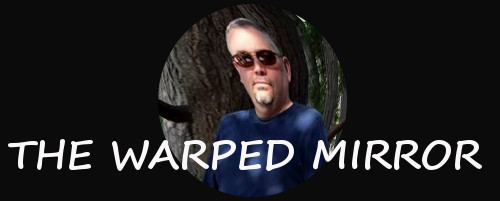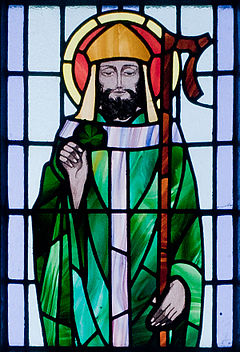My facebook and google+ accounts have been flooded with Fifty Shades of Grey posts. Most of them have expressed less than muted shades of dismay at the movie. Maybe it’s just me, but there seems to be some tunnel vision ethics in the mix.
Let me be clear. I am not promoting, condoning or otherwise supporting the values, ethics or premise the story is founded on. I don’t plan to go see the movie nor have I or do I plan to read the books (much to the relief of my pastoral colleagues and church I am sure). That said, there are many “good” movies people suggest I go see that I pass on, not to mention many “good” books.
I’ll get to the point of this article. I take issue with the rash of bash and slash posts littering the Christian blogosphere that take a narrow aim at Fifty Shades of Grey. In particular, I question the narrow ethical focus that has put one poorly written book (or so I’ve heard for literary reviews), and it’s ensuing cinematic offering, in the cross hairs of a verbal sniper scope. To be sure, many legitimate concerns have been raised, from abuse of women to the cheapening of sex, however I can assure you that this particular book and movie are far from alone in this particular warped genre.
Let’s be clear, Fifty Shades of Grey is a fictional story. However warped you may think the story is, it is just one instance of tens of thousands (if not millions) of works of fiction that delve into the dark side of humanity. It is certainly not the first one to exploit submissive or abusive relationships, let alone sexual power games (to be euphemistic). Yes, this particular work of fiction has put a spot light on the genre, but let’s not pretend that it is something new.
Truth be told, apart from fiction that delves into the dark side of humanity, the literary world and movie makers would have little to publish other than a handful of lackluster offerings. The basic building blocks of plot are conflict and complication. In most cases, that means stealing, murder, hate, forbidden love, forsaken love and so the list goes. Even the stories that pit a protagonist against the forces of nature almost always include inter character tension AKA conflict. Whether it is arguing with a volley ball called Wilson over the need for more rope to build a raft in the movie Castaway, or the heart wrenching scene when Chuck Noland is finally rescued only to find his beloved is now married to his dentist, conflict is at the heart of our stories.
There are of course numerous fictional stories that intentionally speak to the dark side of humanity, exposing them to the light of day. I recently read the Ojibway author, Richard Wagamese’s excellent book, “Medicine Walk.” It is a profound walk through the darkness of soul (I think that is an appropriate term), exposing the agony and suffering of the oppressed so that healing might begin. There are of course many many books and some movies that do this exceptionally well, some subtly, some overtly. Through their imaginative tales we come to understand our own stories in ways that sneak around our defenses and stir our hearts. The power of story should not be underestimated, but what it reveals in us is often more interesting – and sometimes dark – than the story it self.
By the way, did you notice how for a moment I took the focus off of the abusive sexual power play of Fifty Shades? I did so in part to make the point that not every book or movie that delves into the dark side of humanity is to be easily discarded. Sometimes we need issues brought to light through fictional stories. Art in all of it’s forms can do that, though doing it well is not half as easy as it seems. I do believe, however, that there is a difference between exposing and exploiting the dark side of humanity, though it is not always clear cut.
There are those literary works that tell the story of the darkness of humanity and darkness of the soul, exposing it to the light in the hopes of bringing understanding, healing, even redemption. Then there are those works that blatantly exploit the darkness of the soul for titillation and profit (I suspect Fifty fits in here). No doubt the line is fuzzier than I hope – certainly there is both the writer and reader, their own stories mingle with the fictional world, to evoke responses that defy categorization. It is more of a gradient of ethical greys. What to one person is mere escapism can be traumatic to the next when it intersects with their own stories. What is exposing to one may seem exploitive to another and the flip is also true.
So what’s my beef with the roast and toast blog posts? A lack of consistency, or perhaps selective vision. Fifty is hardly the first Hollywood or Indie film to exploit the notion of forbidden sex to turn a quick buck by titillating its audience, nor is it the first one to wrap sex and abusive behaviours together for that same purpose. May be it is the first one some bloggers have heard of, but a little (very little) research reveals that it is nothing new. If you are going to flame the movie (and book), then address the gratuitous exploitation of sex and exploitive power in all movies, not just this one.
For that matter, what about movies that exploit murder, stealing, adultery, coveting, lying, cheating…you know, the stuff that makes up most fiction literature and cinema (I’m not touching “reality” TV here, but I could). Since when has stealing made people heroes? Since when has creating mass carnage in a city, gratuitously depicting the destruction of innocent lives in a movie car chase, been any better than whatever all happens in Fifty? Are we also speaking up against the old western movies that portrayed North American natives as disposable savages, back when killing a white man would get you hung, but kill a native and – one less Indian to worry about? Now that was shameful. What about movies of blood sucking vampires? From a point of social ethics, what does it say about us when we flame one dark genre but ignore others?
We have a generation where a large percentage of kids have blasted or shot innumerable people in the virtual world of gaming. Oh but that’s just a game. Those old movies? They were just unenlightened writers. Oh those vampire movies, it’s just fantasy, no harm. Isn’t Fifty Shades of Grey just a book and a movie based on a warped fantasy? Where is our ethical consistency?
If you are compelled to speak out against the movie, let me offer a few well meaning suggestions. Speak out against the abuse of women in all of it’s forms and in all of it exploitive portrayals. Speak out against people – male and female – who abuse their positions to control and enslave people, including corporate executives who treat people as a disposable resource. Speak out against those who treat sex as a commodity to be traded for. Please don’t stop there. Speak out against those who exploit stealing, hate, assault, murder for entertainment profits. Speak out against those who exploit the darkness of the soul for profit.
At least that’s how I see it in the warped mirror.


